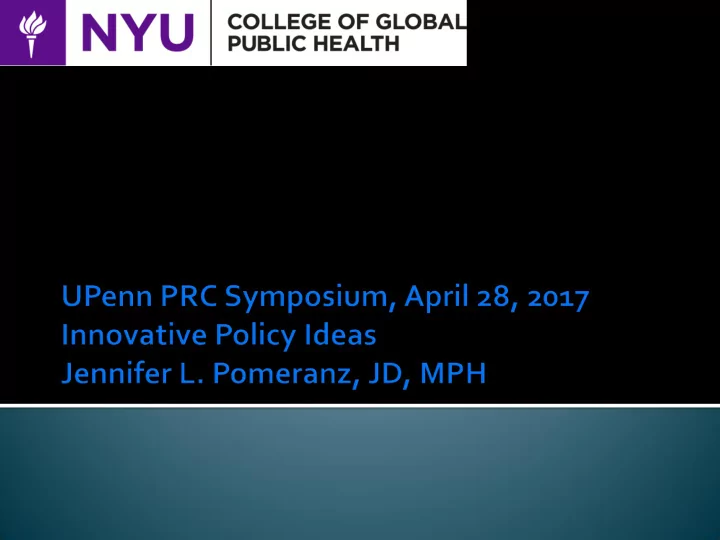

SNAP Eligible Food: this is what beneficiaries can purchase (~anything but hot foods) What about Retailers? Retailers must sell a certain amount of staple and perishable foods to qualify
4 Categories of Staple Foods: meat, poultry or fish bread or cereal vegetables of fruits dairy products Perishable Foods: Frozen/fresh/refrigerated staple foods that will spoil or suffer significant deterioration within 3 weeks USDA
Agricultural Act of 2014: New r etail requirements Draft regulation issued February 2016 Final rule issued at the end of 2016 Implementation expected end of 2017
Vendors can qualify to accept SNAP benefits in two ways: Unchanged: 50% of all retail sales staple foods Or NOW: Sell 7 3 foods in each of the 4 staple food categories ▪ including perishable foods in at least 3 2 of the staple food categories 81 Federal Register 8015 (2016).
Apples, carrots, pears = 3 varieties Chex, Cheerios, Froot Loops = 1 variety Tomato sauce, tomatoes, tomato juice = 1 variety USDA Dec 8, 2016
USDA Dec 8, 2016
1 Perishable in 3 84 stocking units USDA Dec 8, 2016
Purpose: Increase healthy food access Decrease SNAP retailers? Change purchasing? No retail requirements for remaining foods Accessory Foods e.g., soft drinks, coffee, candy Pomeranz 2016
Supply and/or Demand Incentives to Participants Restrictions on Participants Incentives to Retailers Restrictions on Retailers
Congress allows the USDA to pilot projects to evaluate health and nutrition in SNAP The USDA shall carry out pilot projects to develop and test methods: A. to use SNAP to improve the dietary and health status of SNAP households; and B. to reduce adult and childhood overweight, obesity and co-morbidities. Must include rigorous independent evaluation 7 USC § 2026
Healthy Incentives Program Subsidizing fruits and vegetables = increase F&V SNAP Nutrition Education = increase F&V Non-USDA studies too E.g., Harnack et al. 2016 ▪ Pairing incentives for purchasing F&V with restrictions
You can only make progress on policies in locations with authority to act Location matters A note about Preemption
Preemption= limits lower level government action Federal/state limits state/local control Higher government should set minimum requirements But states enacting preemption alone now
The U.S. Constitution does not mention local governments Local governments dependent on states for authority ▪ Cannot always act Great diversity in state-local relations between, as well as within, states.
Kansas (2016) law preempted all local authority to regulate: ALL food service operations and retail establishments information consumer incentive items sale address food-based health disparities S. 366 86th Gen. Assemb., Reg. Sess. (Kan. 2016).
Pomeranz Pertschuk 2017
`“Throughout our history, State and local governments have frequently protected health, safety, and the environment more aggressively than has the national Government.” President Obama (2009)
Questions/Comments?
Recommend
More recommend